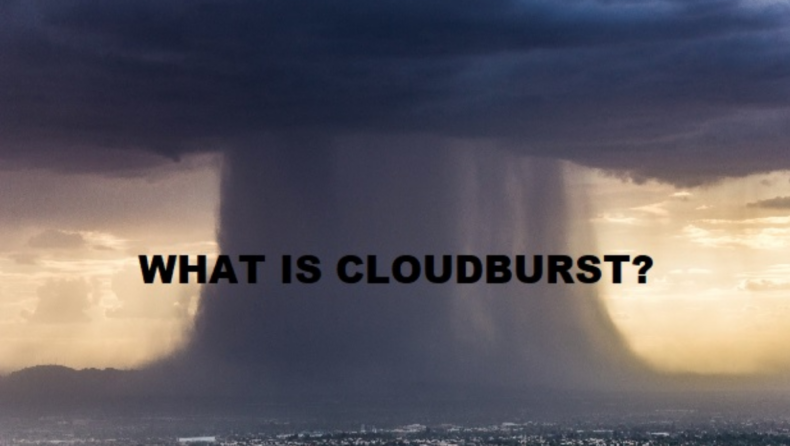Recently, a cloudburst hit near the base camp of the holy cave of Amarnath on Friday.
Over the last 10 years, there is an increase in the number of cloudbursts in the areas of Northern India.

What is Cloudburst?
As per Meteorologists, Rain that comes from a cloudburst is usually the shower type that has a fall rate equal to or greater than 100mm (4.94 inches) per hour.
How does the Cloudburst occur?
- Cloudbursts always occur in the hilly region because mountains are the only landforms that are closer to clouds.
- When the water surface gets heated up due to solar energy. It creates a low-pressure zone as the temperature increases air also becomes warm then the air expands and rises because hot air molecules are loose.
- After reaching a certain height warm air starts to cool and loses its capacity to hold water vapour this is called condensation and the formation of clouds. If the density of clouds increases leads to precipitation.
- As in the month of June, July, and August, there is the summer season in the northern part of India where the temperature is high and humidity (amount of water vapour in the air) also increases. If there is more water vapour in the air, we called it moisture.
- As the moisture-carrying air moves towards the Himalayan region where the temperature is low when the warm air rises vertically by the law of loss of thermodynamics works (heat moves areas from high temperature to lower temperature areas), it may occur orographic rainfall in the windward Side.
- When warm air rises upward along the slope of the mountain starts cooling because the atmospheric pressure decreases with altitude, and the water vapour present in the warm air starts to condense and form a vertical column of cumulonimbus clouds.
- These clouds contain a large amount of water because of getting continuous moisture from below then a result they start to get tightly packed with each other then the density of clouds increases greatly with the rate of the drops and then suddenly it bursts.
Impacts of cloudburst-
-
General impacts-
- Leads to human and animal deaths.
- Damage to infrastructure, crops, forestland
- Increase in diseases rate like malaria, dengue etc.
- Also impacts the economic health of the country.
- Huge loss of landscape degradation like marine life, and ecological imbalances.
- Disruption of essential services.
-
Social impacts-
- Lowering of morale
- Panic creation
- Make the poor more vulnerable-aggravates poverty
- Can cause social activism resulting in political disruption.
-
Phycological impacts-
- This includes fatigue, gastrointestinal upset, and tics as well as cognitive signs such as confusion, impaired concentration and attention deficits
- Also includes emotional signs of depression, anxiety and grief, sleep sickness etc.
- After the pandemic the ratio of heart failure, lung dysfunction etc. Will the increase and the situation of cloudburst also happen in high altitudes?
- Problems like high altitude sickness, breathlessness, and blood pressure disruption.
Way forward-
- The happening of the natural disaster is rising because of the change in climate by manmade developments without a caring environment we can make a change by organizing awareness campaigns.
- Improving our weather departments in technology helps to detect faster of natural calamities so we can take preventive steps.
- Making our forces more hi-tech equipped so they can easily reach the badly affected areas.
Many important steps were also taken by our government to mitigate its impacts like joint exercises between different countries to share their knowledge on the disasters and many more improvements were now embedded in the forces in their training process. And by collaborating with many international agencies like Hyogo frameworks of action, Sendai framework etc. Will improves the working in these conditions.













